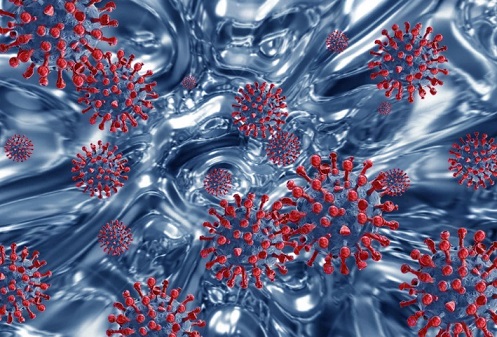SARS-CoV-2 is Mutating to Replicate Better at Lower Temperatures Found in The Human Upper Respiratory Tract
Nikhil Prasad Fact checked by:Thailand Medical News Team Feb 13, 2025 2 months, 1 hour, 3 minutes ago
Medical News: A New Threat: The Virus Adapts to Cooler Conditions
As the world continues to monitor the evolution of the SARS-CoV-2 virus, new research has revealed a concerning development. Scientists have discovered that the virus is undergoing mutations that allow it to replicate more efficiently at the cooler temperatures found in the human upper respiratory tract.
 SARS-CoV-2 is Mutating to Replicate Better at Lower Temperatures Found in The Human Upper Respiratory Tract
SARS-CoV-2 is Mutating to Replicate Better at Lower Temperatures Found in The Human Upper Respiratory Tract
This breakthrough study, conducted by researchers from the National Center for Global Health and Medicine Research Institute-Japan, the University of Tokyo-Japan, the University of Wisconsin-Madison-USA, and Gunma University-Japan, sheds light on how the virus may be adapting for increased survival and transmission.
Under normal conditions, SARS-CoV-2 thrives best at 37°C, the temperature of the human lower respiratory tract. However, it has historically shown reduced replication efficiency at 30°C to 32°C, which is the temperature range of the upper respiratory tract. Given that higher viral loads in the upper respiratory tract correlate with increased transmissibility, this
Medical News report highlights the significance of these findings in the ongoing battle against COVID-19.
Key Findings: How SARS-CoV-2 is Changing
The research team focused on the Omicron subvariant XBB.1.5, which demonstrated superior growth at 32°C and 30°C compared to other earlier Omicron subvariants. Through deep sequencing analysis, scientists found that two specific mutations - NSP6-S163P and NSP13-P238S - increased in frequency to over 97% during viral propagation at 32°C, while they remained below 55% at 37°C. These mutations were identified as key drivers behind the virus's improved replication ability at lower temperatures.
Reverse genetics experiments revealed that the NSP6-S163P and NSP13-P238S mutations enhanced viral genome replication, leading to higher virus titers in the upper respiratory tracts of infected hamsters. This suggests that these mutations may provide an evolutionary advantage, allowing the virus to establish itself more efficiently in the nose and throat, where it is more easily spread through aerosols and droplets.
The Role of NSP6 and NSP13 in Viral Growth
The study delves deeper into the functions of the two identified mutations. NSP6 is a transmembrane protein involved in forming replication organelles, which are critical for the virus's ability to replicate its RNA. The NSP6-S163P mutation is believed to influence the organization of these organelles, enhancing viral RNA replication at lower temperatures.
Meanwhile, NSP13 is a helicase that unwinds double-stranded RNA during genome replication. The NSP13-P238S mutation appears to boost the efficiency of this process, particularly at cooler temperatures. The combination of both mutations resulted in significantly higher viral loads in hamster models, providing strong evidence that these c
hanges contribute to the virus's adaptation to the upper respiratory tract.
Does This Mean the Virus is More Transmissible?
While the study confirms that these mutations improve viral replication in the upper respiratory tract, it does not necessarily mean that the virus has become more transmissible in humans. Hamster models showed that while the mutant virus exhibited slightly higher titers in the nasal passages, its transmissibility remained comparable to that of the original XBB.1.5 strain. However, scientists caution that in combination with other mutations, these changes could potentially enhance the virus's ability to spread between humans.
Additionally, researchers noted that although the NSP6-S163P and NSP13-P238S mutations have been identified in lab-propagated samples, their presence in real-world clinical isolates remains low. This suggests that while these mutations provide an advantage in laboratory conditions, their impact on human-to-human transmission is still unclear and requires further investigation.
Implications for Future Outbreaks and Vaccine Development
The discovery of these mutations has significant implications for global public health. If these adaptations become widespread, they could potentially lead to variants that spread more efficiently in colder seasons or regions. This could result in increased infections during winter months, when respiratory viruses already have a seasonal advantage.
Furthermore, the findings offer potential benefits for vaccine development. Since the mutations enhance viral replication in cultured cells, they could be used to improve the production of inactivated or live-attenuated vaccine strains. Researchers are now exploring how these insights can be applied to enhance vaccine manufacturing processes and effectiveness.
Conclusion: Monitoring and Preparedness
This study highlights the ever-changing nature of SARS-CoV-2 and underscores the need for continuous monitoring of viral mutations. While the NSP6-S163P and NSP13-P238S mutations do not drastically alter the virus's transmissibility on their own, they contribute to its replication efficiency in the upper respiratory tract. This raises concerns about potential future mutations that could further enhance the virus's ability to spread.
Scientists emphasize that ongoing genomic surveillance is crucial to detecting and assessing new mutations as they emerge. Public health officials and researchers must remain vigilant to ensure that preventive measures and vaccine strategies are adapted accordingly.
The study findings were published in the peer-reviewed Journal of Virology.
https://journals.asm.org/doi/10.1128/jvi.02217-24
For the latest COVID-19 News, keep on logging to Thailand
Medical News.
Read Also:
https://www.thailandmedical.news/news/breaking-news-sars-cov-2-delta-and-omicron-variants-display-enhanced-resistance-to-uv-light-compared-to-original-wuhan-strain
https://www.thailandmedical.news/news/breaking-italian-and-american-study-claims-that-sars-cov-2-has-evolved-to-withstand-higher-temperatures
https://www.thailandmedical.news/articles/coronavirus
Follow us on:
https://x.com/ThailandMedicaX
https://www.facebook.com/ThailandMedicalNews
https://bsky.app/profile/thailandmedical.bsky.social
https://gettr.com/user/thailandmedicalnews
https://www.tribel.com/thailandmedical/wall
and 33 other social media platforms
